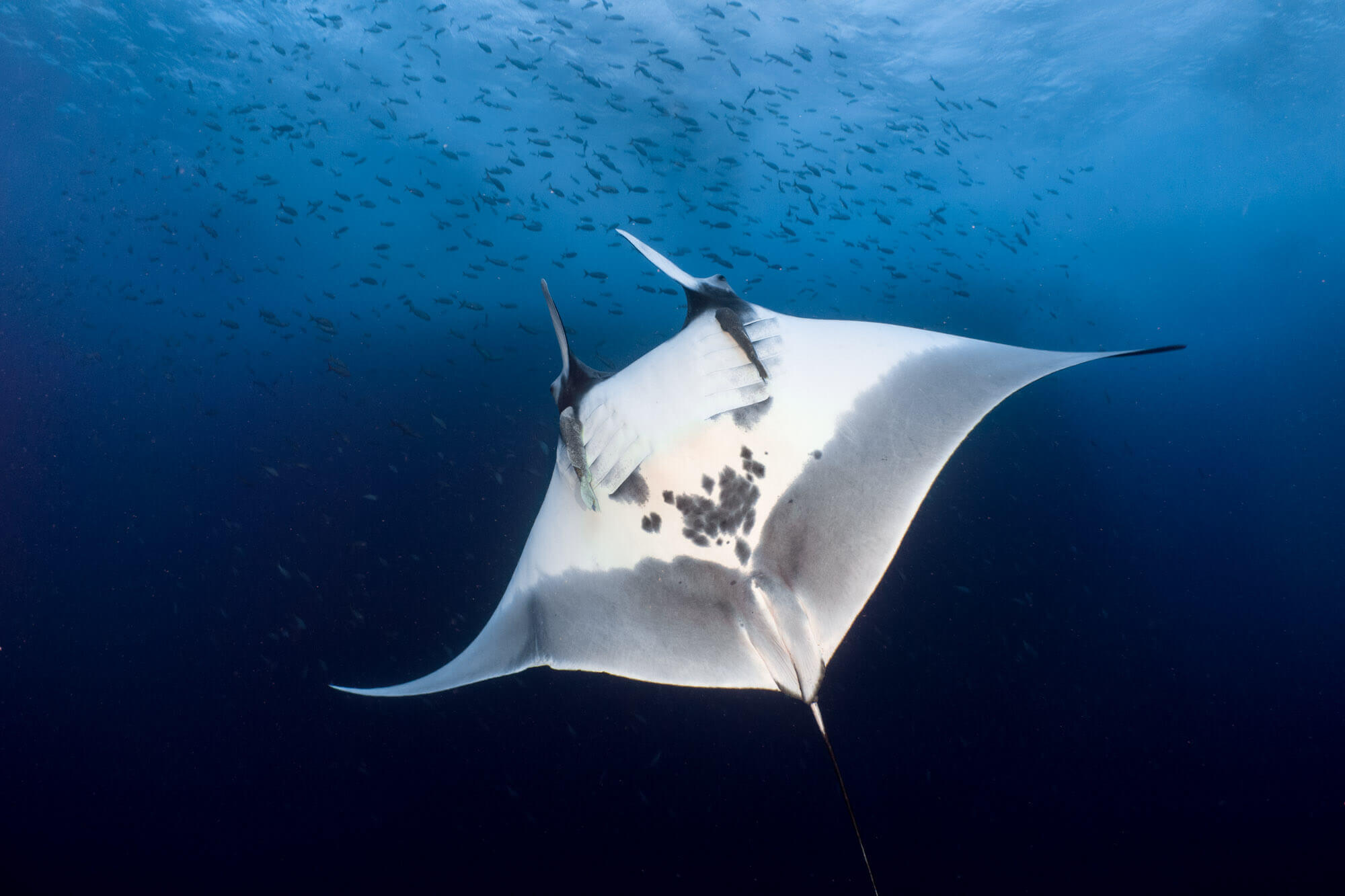The Revillagigedo Islands (Rev-ee-ya-hee-hay-doh commonly called the Socorro Islands) are a scuba diving paradise in the Pacific Ocean. They comprise a 4-island archipelago (with Socorro Island being the largest) approximately 390 km southwest of Cabo San Lucas and 720 to 970 km west of Manzanillo. Here’s an account of our experience scuba diving in the Socorro Islands.

Marine Paradise

They are all uninhabited volcanic islands, except for a Mexican naval station on Socorro and a small naval garrison on Clarión. The archipelago is a UNESCO World Heritage Site, a marine reserve, and a national park of Mexico.
The smallest island, Roca Partida, is barely an island, at 100 metres long and 8 metres wide. It has 2 peaks rising no more than 25-34 meters out of the Pacific Ocean.
Because of their distance from mainland Mexico and absence of a public airport, the only way to scuba dive in the Socorro Islands is on a liveaboard. It’s a 30 hour journey from Cabo. There are several liveaboard operators who make the journey to Revillagigedo from November through May, and many book up a year in advance.
We went on this adventure in late January 2018 aboard the Nautilus Belle Amie. At the time it departed from San José del Cabo, but now it operates out of Cabo San Lucas.
We boarded the boat on a Thursday at 9pm, and arrived at the closest island, San Benedicto, by early Saturday morning. One day was spent at San Benedicto, 2 days at Roca Partida, and 2 days at Socorro Island before the 30 hour journey back to Cabo.
Large Animal Life

The isolated islands offer cleaning stations for giant oceanic mantas and other large ocean life. They congregate here before moving on. Giant schools of fish, up to 10 species of sharks (all friendly), giant mantas, whale sharks, dolphins and large tuna are the main attractions.
The diving is advanced and challenging. Average depths are 20-25 meters, with many sites having noticeable current. Roca Partida is a vertical wall with no bottom within recreational depths. It has a strong diagonal surge as you get close to the rock face (which can be quite fun to ride but sometimes unsettling). Diving is from pangas/skiffs. After a dive, you can surface wherever you are, inflate a safety sausage, and the panga will come get you. (Although sometimes you’ll be riding large ocean swells while waiting for the panga.)


Diving with Nautilus
The Nautilus Belle Amie is the largest boat servicing Socorro, which is beneficial when conditions get rough. We had some choppy water and swells for the first few days, but the ride was smooth and the boat was always comfortable. (And this from somebody who regularly gets sea sick.) Despite having 30 divers on board, the boat was spacious and never felt crowded. They split divers into 3 or 4 groups and stagger the dive times to avoid crowds on the dive deck.

Arriving Early
As with any liveaboard trip I strongly recommend arriving in Cabo at least 1 day early. Flight delays can have serious consequences as you might miss the boat departure! The Belle Amie boards around 8pm, and Nautilus arranges a hospitality suite at a local hotel. You can drop off your luggage here and hang out for the day. But we heard from guests who did this that they were extremely bored after a few hours. We arrived a day early and stayed at an all-inclusive resort, and arranged to stay until 6pm on boarding day, then took a taxi to the marina… a much better way to spend the day!
So what are you waiting for? You could be scuba diving in the Socorro Islands!

Leave a Reply